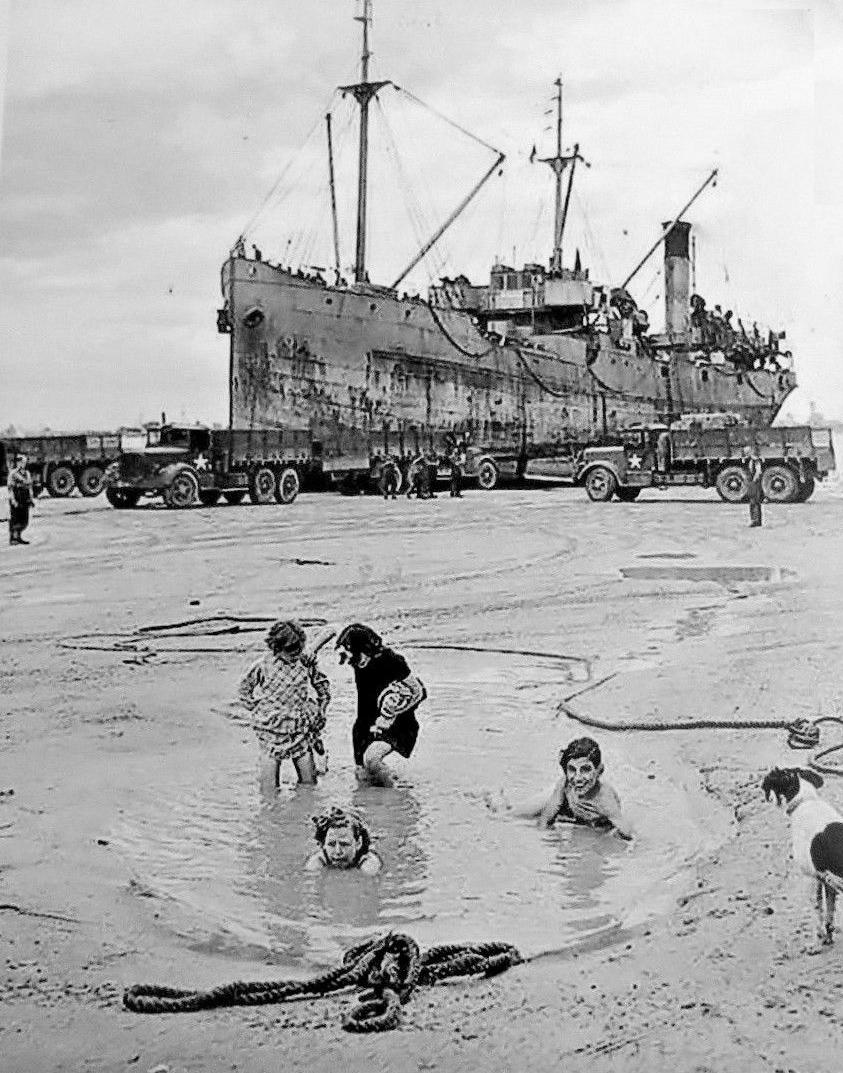
D-Day Invasion: Ports and Logistics--Need for a Port (June-December 1944)

Figure 1.-- Here children are playing on the Normandy beach Arromanches in the British sector. It was the siure of the Bruitish Mulberry which unlike the American Mulberry was not destroyed in the storm following the D-Day landings. The Allies failed to seize an operational port. Thus throughout 1944, they were still dependent on delivering supplies over the Normandy beaches. The photograph was taken July 31, nearly 2 montha after the landings.
|
|
The need for a port is a critical problem for any large-scale amphibious landing. Seizing a beach head was only the first step. to exploit the landings and move inland, ports are needed. Some supplies can be landed on the beaches, but not very efficently. To support a major army, ports are needed with docks and and cranes. Only ports are equipped to quickly and efficently funnel large quantities of supplies to the fighting men at the front. One of the criterion that went into choosing Normandy as the invasion site was that two major ports were located in the Normandy area-- Cherbourg and Le Havre. In addition, success at Normandy offered good prospects for securing in good order ports further south (Brest, Nantes, L'Orient, and St. Nazaire). The Germans fully understood the necessity for the Allies to secure ports and thus heavily fortified the major ports. This would make it difficult for the Allies to seize them and would give the Germans the time needed to destroy the port facilities. The port garisons were ordered to resist to the end so that the Allies would be delayed as long as possible. A great deal went right for the Allies. This would be one area in which the German Atlantic Wall preparations went right and would bedevil the Allied campaign throughout 1944. The Allies would manage to make do without a major port, but had to limit offensive operations after the fall of France. To support the Montgomry's Market Garden offensive, the American forces aproaching the Reich and the Siegfried Line (West Wall) could not be fully supplied.
CIH -- WW II

Navigate the CIH World War II Section:
[Return to Main D-Day port and logistics page]
[Return to Main D-Day page]
[Return to Main U.S. World War II page]
[Return to Main military style page]
[About Us]
[Biographies]
[Campaigns]
[Children]
[Countries]
[Deciding factors]
[Diplomacy]
[Geo-political crisis]
[Economics]
[Home front]
[Intelligence]
[POWs]
[Resistance]
[Race]
[Refugees]
[Technology]
[Bibliographies]
[Contributions]
[FAQs]
[Images]
[Links]
[Registration]
[Tools]
[Return to Main World War II page]
[Return to Main war essay page]
Created: 4:36 PM 9/1/2018
Last updated: 4:37 PM 9/1/2018



